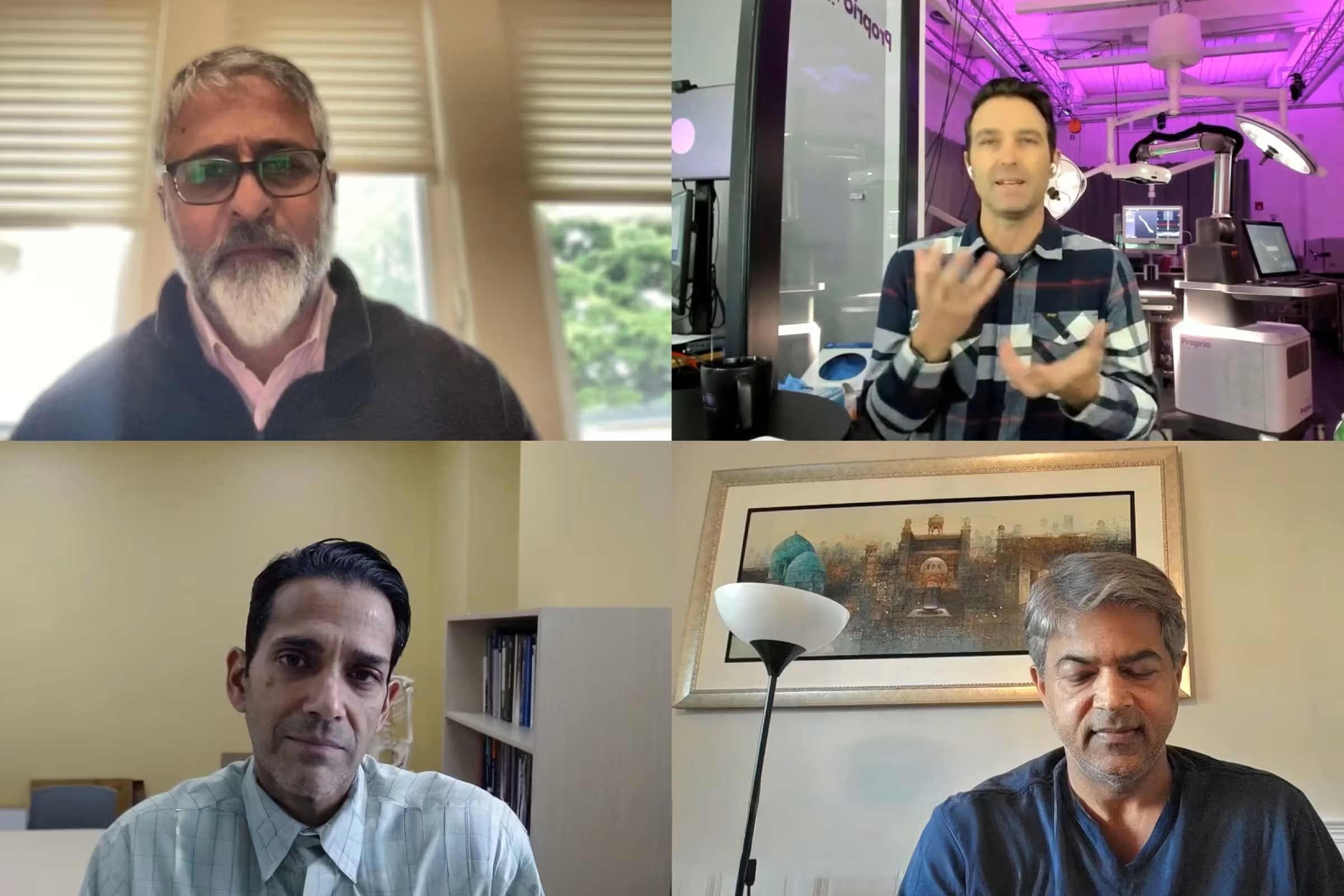
For over three decades, the Harms Study Group (HSG) has defined how outcomes are studied in spine surgery. Across 30 leading hospitals worldwide, their collaborative research has guided treatment for thousands of children with spinal deformities and degenerative conditions.
In this conversation, Proprio co-founder and CEO Gabriel Jones joins Dr. Firoz Miyanji, Dr. Amer Samdani, and Dr. Suken Shah of the Harms Study Group to explore how continuous data capture, artificial intelligence, and automation are redefining surgical practice, training, and research.
Watch the full video below.
Chapters
00:00 Introduction to Proprio and Harm Study Group
02:58 The Evolution of Data-Driven Outcomes in Pediatric Spine Surgery
05:57 The Role of AI in Enhancing Surgical Practices
08:49 Training the Next Generation of Surgeons
11:44 The Future of Spine Surgery
14:53 Impact of Technology on Surgical Performance
18:02 Automation in Surgery: Enhancing, Not Replacing
20:47 Conclusion and Future Directions
For years, the surgical journey has been fragmented, different data systems before, during, and after the operation.
Dr. Samdani explains the change ahead:
“[T]hey really are siloed preoperatively, intraoperatively, and postoperatively. So what I see this technology helping us to do is it’s really going to create this continuum because now we’re going to have not only more efficient data acquisition, it’s going to be more accurate. We’re going to be able to tie not only clinical and radiographic parameters, but there’s going to be parameters and data values that we don’t even know exist.”
By integrating Proprio’s real-time intraoperative data with HSG’s longitudinal outcomes registry, the collaboration creates a single, continuous stream of insight, connecting pre-, intra-, and postoperative understanding in one measurable feedback loop.
Beyond research, the partnership opens new possibilities in surgical education.
Dr. Shah described it this way:
“The teaching part is iterative … you can get better at those skills through repetition and deliberate practice and getting feedback. I think this tool is going to really leverage the feedback part.”
He continued:
“It also prepares you for curve balls and unexpected events… when we’ve seen them before, you can respond to them in a much better, safer way that’s going to provide a better outcome for the patient. I’m really excited about the teaching part.”
Jones added:
“We don’t want to automate away the art of surgery. We want to automate the burdens so surgeons can focus on mastery.”
Together, the teams envision a world where continuous measurement accelerates learning, shortening the curve from novice to expert while preserving the artistry of surgical decision-making.
Dr. Shah summarized the long-term impact:
“We’re going to make care better. We’re going to come to the true era of precision medicine and customized medicine and perhaps even creating medicine… giving the patient the best plan for the best outcome.”
Each operation can now become a learning event, feeding algorithms that continuously refine best practices and helping surgeons see and measure what defines great performance.
Dr. Samdani captured the purpose of it all:
“There’s several studies that we’ve done where we just can’t pick up an objective reason why outcomes are different. It just comes down to an intangible factor that’s surgeon-related, and hopefully we’ll be able to dissect some of that.”
“It’d also be really interesting to see how these new technologies impact surgeon physical and cognitive load because that’s going to play a big role for longevity and obviously better outcomes as well.”
As Dr. Miyanji noted in closing:
“Automating data collection and entry is a super positive thing. Nothing’s being replaced. You’re trying to improve and enhance that process… I actually would say it is the way to go.”
This partnership is more than a collaboration; it’s a blueprint for how AI, data, and human expertise can come together to transform medicine, pioneering a future where surgery is not only safer and faster, but smarter.